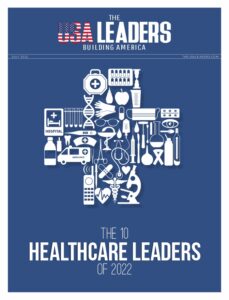Leadership plays a critical role in healthcare, influencing everything from team dynamics to patient outcomes. The way leaders interact with their teams can shape the overall environment in a healthcare setting, affecting how well team members communicate, collaborate, and perform their duties. In healthcare, where the stakes are high and the work is often complex, effective leadership is essential for ensuring that teams function smoothly and efficiently. Different leadership styles can have varying impacts on team dynamics, and understanding these impacts is crucial for anyone in or aspiring to a leadership role in healthcare.
As healthcare continues to evolve, there’s a growing emphasis on leadership development within the field. Healthcare professionals, particularly those in management and supervisory positions, are increasingly recognized for their ability to influence not only the functioning of their teams but also the quality of care provided to patients.
Let’s discuss the impact of leadership styles across healthcare team dynamics:
Transformational Leadership: Empowering Nurse Leaders
Transformational leadership is a style that focuses on inspiring and motivating team members to reach their full potential. Leaders who adopt this style encourage innovation, creativity, and personal development, fostering an environment where team members feel valued and empowered to contribute their best work. In the healthcare field, transformational leadership is particularly well-suited to nurse leaders. Nurses play a crucial role in patient care and often work in high-pressure environments where collaboration and support are essential. Transformational leaders can create a positive and inclusive atmosphere that promotes continuous improvement and high levels of job satisfaction among nursing staff.
For nurses who are looking to develop their leadership skills, pursuing further education is often a necessary step. Advanced nurse degree paths provide the training and knowledge needed to effectively lead healthcare teams and implement transformational leadership principles. These degree programs often include coursework in leadership, communication, and healthcare management, all of which are critical for developing the skills needed to inspire and guide others. Additionally, advanced education allows nurses to stay updated on the latest trends and best practices in healthcare, further enhancing their ability to lead effectively.
Autocratic Leadership: When Control is Necessary
Autocratic leadership is characterized by centralized decision-making and a top-down approach, where the leader maintains strict control over the team’s actions and decisions. In healthcare, there are situations where autocratic leadership can be beneficial, particularly in emergency or high-stress environments where quick, decisive action is required. For example, in an operating room or during a critical care situation, having a leader who can make swift decisions without needing to consult with the entire team can be crucial for patient survival. In these settings, the clarity and direction provided by an autocratic leader can ensure that all team members are focused and working towards the same goal.
However, the autocratic leadership style also has its drawbacks, especially when it comes to long-term team dynamics. A leadership approach that does not encourage input from team members can lead to decreased morale and a lack of engagement, as team members may feel that their contributions are not valued.
Over time, this can result in burnout and high turnover rates, which are particularly problematic in the healthcare field, where experienced professionals are needed to provide high-quality care.
Democratic Leadership: Encouraging Team Collaboration
Democratic leadership, also known as participative leadership, emphasizes shared decision-making and collaboration among team members. In this style, leaders encourage input from all team members, fostering an environment where diverse perspectives are valued, and everyone feels a sense of ownership in the outcomes. In healthcare, where teamwork and communication are critical, democratic leadership can be particularly effective.
However, implementing a democratic leadership style in healthcare does come with challenges. One of the primary challenges is the need for strong communication skills, both for the leader and for team members. Without clear and effective communication, the decision-making process can become slow and cumbersome, potentially delaying critical actions. Additionally, in high-pressure situations, the collaborative nature of democratic leadership may lead to indecision if team members are unable to reach a consensus quickly. Despite these challenges, when implemented effectively, democratic leadership can lead to a more engaged and motivated team.
Laissez-Faire Leadership: Promoting Autonomy in Healthcare Teams
Laissez-faire leadership is a style that grants team members a high degree of autonomy, allowing them to make decisions and carry out their responsibilities with minimal oversight from the leader. This leadership style can be effective in healthcare settings where team members are highly skilled, experienced, and self-motivated. For instance, in specialized medical units, such as oncology or intensive care, where professionals have advanced training and expertise, laissez-faire leadership can foster an environment of trust and independence. This autonomy can empower healthcare professionals to use their judgment and skills to provide high-quality care, which can be particularly beneficial in situations that require specialized knowledge and quick decision-making.
However, laissez-faire leadership also has potential risks, especially in healthcare settings where clear direction and coordination are crucial. Without adequate guidance, there may be a lack of consistency in how tasks are performed, leading to variations in patient care and potential gaps in communication among team members. Additionally, when team members are not given sufficient support or feedback, it can result in decreased motivation and engagement. In healthcare, where patient safety is paramount, the absence of strong leadership oversight can lead to errors or omissions in care.
The Impact of Leadership Styles on Patient Care and Outcomes
The leadership style adopted by healthcare managers and leaders can have a profound impact on patient care and outcomes. Transformational leadership, for example, has been shown to positively influence patient care by fostering a culture of continuous improvement, innovation, and high morale among healthcare teams. When healthcare professionals feel motivated and supported by their leaders, they are more likely to go above and beyond in their roles, leading to better patient outcomes, higher patient satisfaction, and a more positive overall experience for both patients and staff. Conversely, a lack of effective leadership or the use of a leadership style that does not resonate with the team can lead to disengagement, lower morale, and, ultimately, a decline in the quality of care provided.
It’s essential to recognize that no single leadership style is universally effective in all situations. The key to optimizing patient care lies in a leader’s ability to adapt their leadership style to the needs of the team and the specific circumstances they face.
The leadership style adopted in healthcare settings plays a crucial role in shaping team dynamics and, ultimately, patient outcomes. Transformational, autocratic, democratic, and laissez-faire leadership styles each have their strengths and potential drawbacks, and the effectiveness of these styles depends on the specific context in which they are applied. Healthcare leaders must be adaptable and capable of adjusting their leadership style to meet the needs of their teams and the demands of the situation.
Also Read: Prescriptions for Excellence: Unveiling the 9 Best Hospitals in the USA for Optimal Healthcare






















